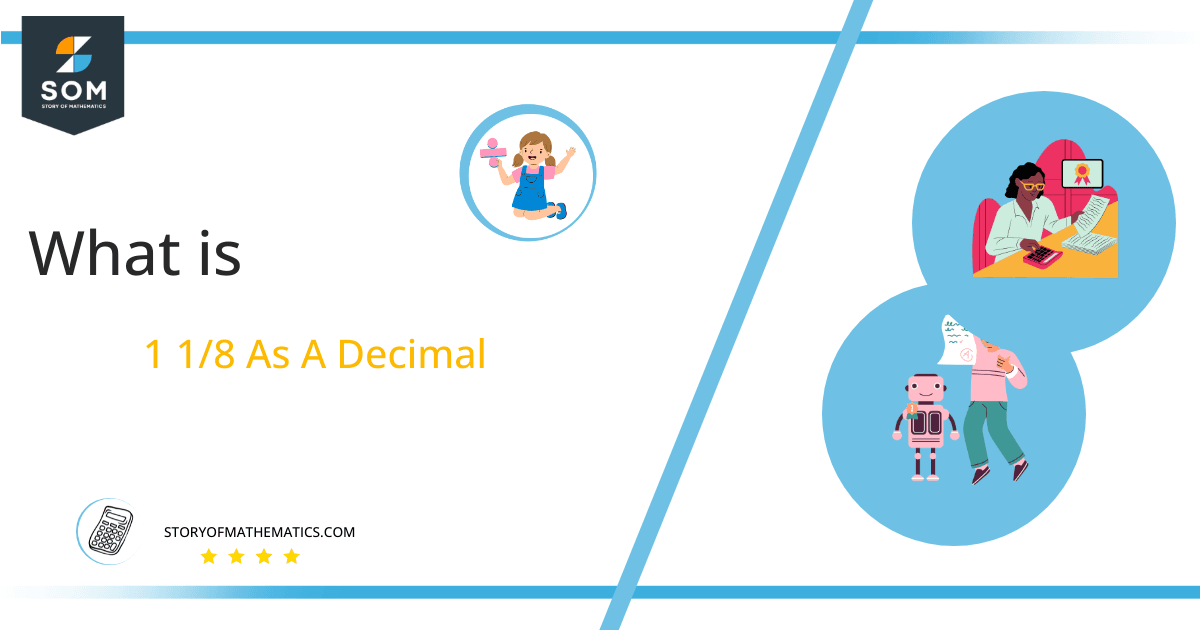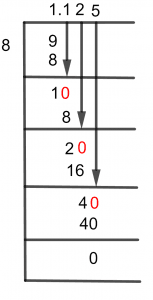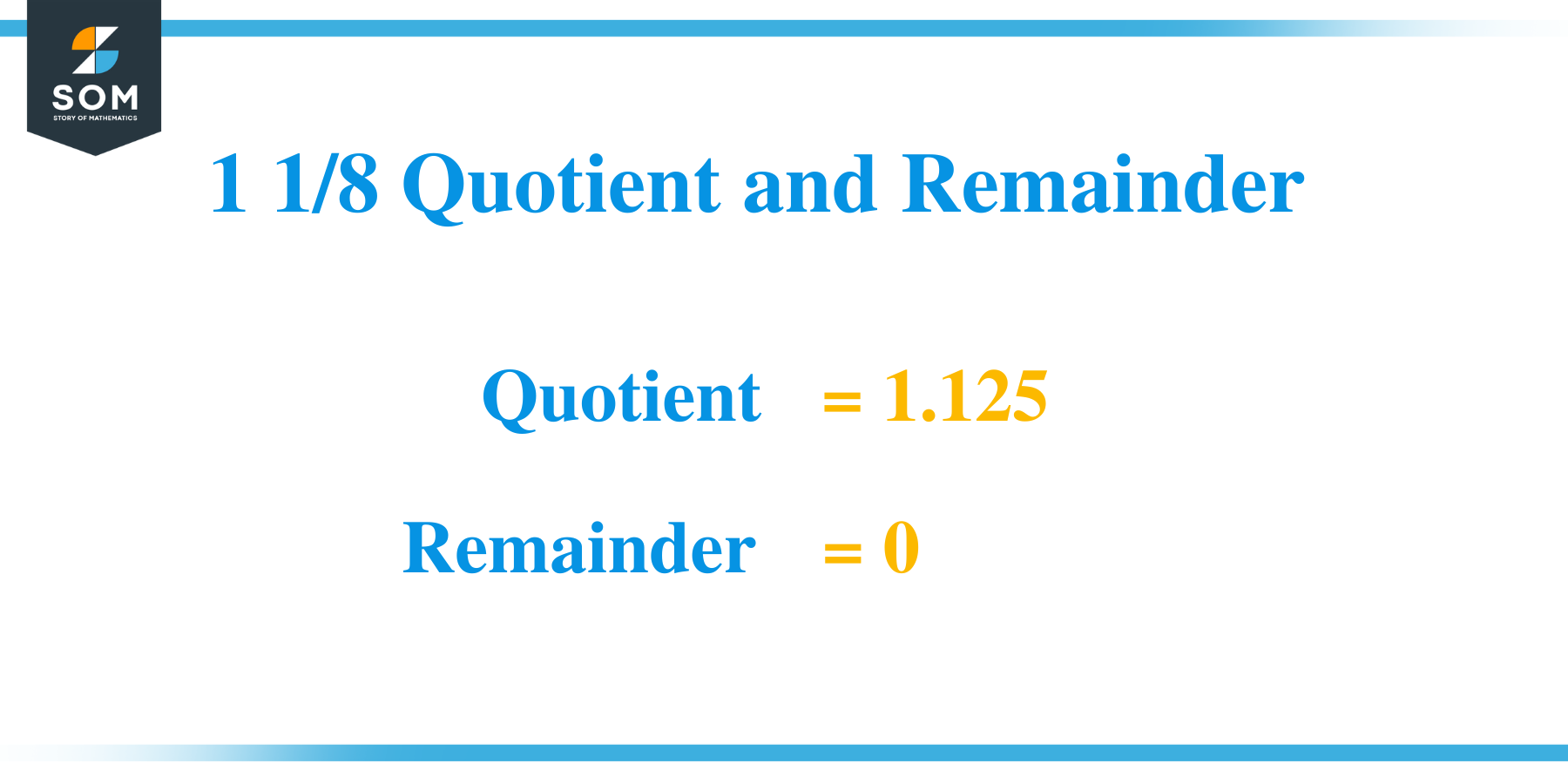What Is 1 1/8 as a Decimal + Solution With Free Steps

The fraction 1 1/8 as a decimal is equal to 1.125.
The Fraction components are denoted by the Numerator, which is a number above the line or slash, and the Denominator, which is a number below the line or slash.
Fractions are classified into three types: mixed, proper, and improper.We define Improper fractions as when the numerator is equal to or greater than the denominator. Similarly, a fraction is said to have a Proper function when the numerator is smaller than the denominator.A Mixed fraction comprises a whole integer and a proper fraction.
To demonstrate how to use the Long division method to solve a division problem, let’s look at the solution to our fraction of 1 1/8.
Solution
1 1/8, the provided fraction, is a mixed fraction. Before moving on to the solution, it must first be transformed into an improper fraction.
To do this, multiply the denominator 8 by the integer 1, then add the resulting improper fraction to the numerator 1. The improper fraction obtained after solving the mixed fraction is 9/8.
In long division, the numerator is referred to as the Dividend and the fraction’s denominator as the Divisor:
Dividend = 9
Divisor = 8
When we divide two numbers, we get the result as a decimal number. It is known as the Quotient:
Quotient = Dividend $\div$ Divisor = 9 $\div$ 8
As a result of division, we occasionally obtain some remaining value, which is referred to as the Remainder.
The fraction’s expression has now been completely transformed, and we are ready to solve this division using the Long division method.

Figure 1
1 1/8 Long Division Method
Before dividing, 1 1/8 is reduced to an improper fraction, 9/8. As a result, we will now cover the 9/8 division:
9 $\div$ 8
Because the dividend is greater than the divisor, the two numbers can be divided:
9 $\div$ 8 $\approx$ 1
Where:
8 x 1 = 8
The remaining value is determined to be 1:
9 – 8 = 1
As a result of the first division iteration, we have a remainder of 1. Therefore, the dividend will now be 1, and because 1 is less than the divisor, we will add a decimal point to add an extra zero to the dividend. Hence dividend becomes 10.
10 $\div$ 8 $\approx$ 1
Where:
8 x 1 = 8
For the remainder, we subtract 8 from 10 once more:
10 – 8 = 2
Make the dividend 20 by adding zero to the dividends on the right side:
20 $\div$ 8 $\approx$ 2
Where:
8 x 2= 16
We’re left with the following:
20 – 16 = 4
We now have a remainder of 4. We are increasing the dividend by another zero:
40 $\div$ 8 =5
A result with a zero remainder indicates that the division procedure has been completed. As a result, 1 1/8 has a quotient of 1.125.

Images/mathematical drawings are created with GeoGebra.
